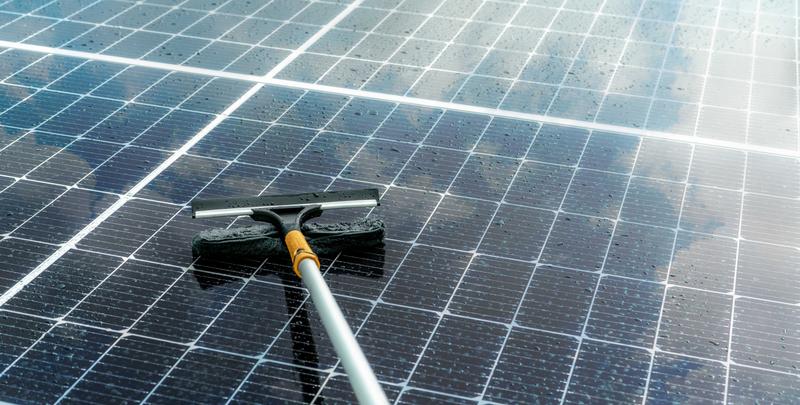
When you’re seeking a higher-general performance Solar Panel Cleaning brush, Skilled-grade
Why Photo voltaic Panel Cleaning Matters
Photo voltaic panels seize Power at their very best when clean up. Dust, pollen, chook droppings, and smog lower effectiveness—at times by twenty% or even more. Typical cleaning can help keep optimum performance, increase panel daily life, and shield your expense.
Primary Gains:
- Improved energy output
- Decreased electrical power bills
- Extended panel lifespan
- Reduced possibility of micro‑cracks as a result of thermal hotspots
Different types of Solar Cleansing Tools
Picking out the right Device is determined by your set up, h2o availability, and wanted benefit. Categories incorporate:
- H2o‑powered solar brush programs
- Moveable photo voltaic panel cleaning kit bundles
- Pure drinking water cleansing units
- Rotary photo voltaic brushes and extension poles
Water Powered Photo voltaic Brush Systems
These brushes connect to a water supply and spin when dispensing h2o, combining cleansing and lubrication in a single step. The result: spotless panels without having scratching.
Essential Options:
- Built-in h2o feed through the brush head
- Gentle bristles Protected for glass surfaces
- Rotary motion lowers guide effort and hard work
- Mounts on extension poles for rooftop obtain
Moveable Photo voltaic Panel Cleansing Kit
A whole
- Brush head (set or rotating)
- Extension pole (adjustable lengths as much as 6 m)
- Hose adapters or quick‑join fittings
- Pure‑h2o tank or filtration system
- Gentle microfiber towels or squeegees
- Non‑abrasive cleansing Option (if permitted)
Advantages of All-in-A single Kits:
- Begin cleansing with small setup
- Compact for storage or travel
- Appropriate with residential or commercial photo voltaic arrays
Pure Drinking water Solar Cleansing Techniques
These methods purify local water—eradicating minerals and Filth—so it won’t go away scale or streaks. Pure drinking water empowers professional-quality final results with out substances.
How It Works:
- Pretreatment filtration (sediment, carbon, ion Trade)
- Ultimate deionization or reverse‑osmosis phase
- Filtered water circulated through brush for cleaning
- Residue‑free drying—no places or streaks remaining driving
Rotary Photo voltaic Brush & Extension Poles
For big solar arrays or business use, an influence-rotating head on the telescoping extension pole will make cleaning successful and Secure.
Pros:
- Considerably less Actual physical energy, a lot quicker coverage
- Get to roofs and floor‑mounted panels effortlessly
- Adjustable shaft lengths for various angles
- Common fast‑link techniques for equipment
Deal with Safety & Greatest Techniques
Cleansing photo voltaic panels entails heights and slippery surfaces—security initially:
- Use non‑conductive extension poles
- Avoid stress washers that could crack glass
- Do the job early or late to avoid glare and heat
- Put on grips and slip-resistant shoes
- Observe neighborhood water‑use principles or constraints
Stage‑by‑Move Cleansing Routine
- Turn off the photo voltaic inverter or ensure system is deactivated
- Rinse panels with reduced‑stress water
- Utilize a brush (or photo voltaic brush package) with drinking water feed
- Scrub gently in overlapping, linear passes
- Rinse completely with clean water
- Dry with microfiber squeegee or soft towel—provided that wanted
Picking out the Appropriate Photo voltaic Panel Cleaning Tool
Consider your set up and also your drinking water access:
Upkeep & Care Ideas
- Flush hose and brush immediately after Just about every use
- Retail store dry, clean, and away from UV publicity
- Substitute worn brush heads—and check bristle softness
- Inspect seals and connectors for leaks
- Replace or clear filters in pure‑drinking water programs routinely
Eco-Friendly Cleaning Rewards
Correct cleansing prolongs photo voltaic panel efficiency and minimizes Vitality waste. Using h2o on your own—devoid of soaps or chemical substances—will help preserve nearby ecology and avoids runoff pollution.
How Photo voltaic Panel Cleansing Impacts ROI
Intelligent maintenance making use of quality brushes and kits retains process performance topped up, minimizing the payback interval and maximizing energy yield after some time.
Cost Concerns & Value
- H2o‑powered solar brushes are Price-effective and sturdy
- Pure h2o devices call for upfront financial commitment but present consistent, location‑cost-free cleaning
- Rotary brush kits Enhance productivity—worthwhile for large installations
- Do it yourself kits help save labor expenses; Specialist providers Price much more but free up your time and energy
Frequent Takes advantage of of Solar Panel Brushes
- Residential rooftops
- Professional solar farms
- RV or mobile installations
- Photo voltaic carports
- BIPV segments (creating‑built-in photovoltaics)
Consumer Testimonials & Use Situations
“This photo voltaic panel cleansing brush designed a noticeable big difference in minutes—dust absent, no streaks, and our output enhanced!”
“Upgrading to the water‑powered photo voltaic brush saved several hours of scrubbing. Combined with a pure h2o technique, the panels appeared completely new.”
FAQs About Photo voltaic Panel Cleansing
How often really should panels be cleaned?
Each individual six to twelve months, according to your local climate—much more generally in dusty or pollen-heavy regions.
Can rain cleanse photo voltaic panels?
Rain assists but doesn’t remove Dust buildup or movie levels—manual cleaning yields greater general performance.
Can I use tap water?
Tap water may possibly go away mineral residue. A
Can cleaning problems panels?
Provided that abrasive applications or high-stress washers are employed. Constantly use comfortable bristles, very low-force, and observe maker pointers.
Professional Tricks for Photo voltaic Panel Homeowners
- Clear early morning or night to stay away from thermal worry
- Observe output facts—if general performance drops, cleanse panels
- Hold panels angled—standing drinking water promotes algae advancement if still left also lengthy
- Rotate brush heads periodically to take care of even don
Conclusion: A Brush For each Need
Whether or not you’re searching for a price-successful
Discover the complete line of brushes and Water powered solar brush components made especially for photo voltaic cleansing at